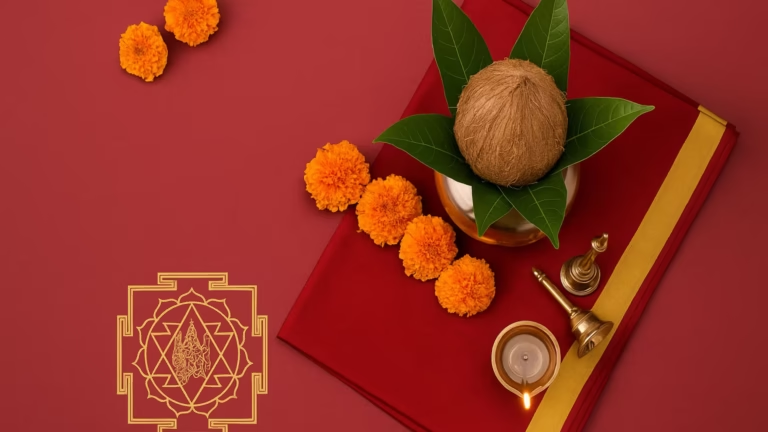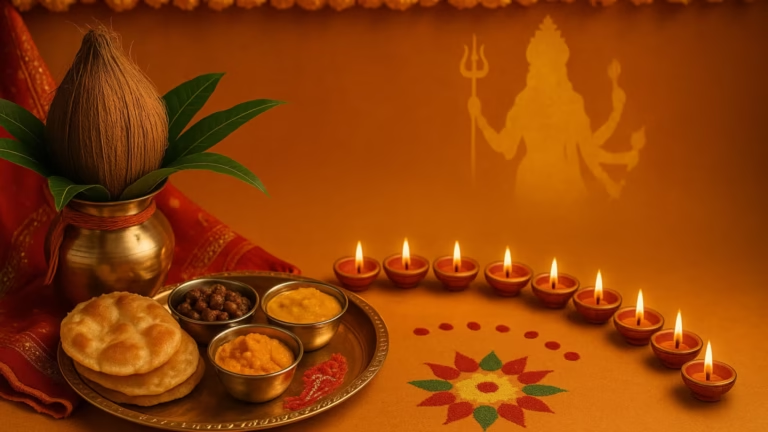Table of Contents
Pandharpur Wari 2025
Pandharpur Wari is a grand religious pilgrimage in Maharashtra, held every year on Ashadhi Ekadashi for the divine darshan of Lord Vitthal (Vithoba). The Wari is carried out in the form of palanquins (palkhis) of Sant Dnyaneshwar Maharaj (from Alandi) and Sant Tukaram Maharaj (from Dehu), and it involves the participation of millions of Warkari devotees. It symbolizes devotion, discipline, social harmony, and spiritual practice.
This tradition is rooted in the devotional paths of Sant Dnyaneshwar and Sant Tukaram. It’s not just a religious event but a living expression of Maharashtra’s soul, culture, and people’s faith.
How Does the Wari Begin?
The Wari begins with the “Paduka Yatra,” where the sacred sandals (padukas) of the saints are placed in silver palanquins and carried by their followers as a walking pilgrimage toward Pandharpur.
The tradition of Sant Tukaram Maharaj’s palkhi began in 1685 CE by his descendants, and Sant Dnyaneshwar Maharaj’s palkhi joined the Wari tradition around the 1820s. The pilgrimage lasts for about 21 days, with daily singing of bhajans and kirtans while heading toward Pandharpur.
Walking is not just a physical act here — it’s seen as a path to self-purification and discipline. Every Warkari believes this journey is a step toward their spiritual evolution.
Read Also: Devshayani Ashadhi Ekadashi 2025: date,tithi, Significance, Rituals, and Worship Practices
Pandharpur Wari 2025 Dates and Key Events
Start Dates:
- Sant Tukaram Maharaj Palkhi (from Dehu): June 18, 2025 (Wednesday)
- Sant Dnyaneshwar Maharaj Palkhi (from Alandi): June 19, 2025 (Thursday)
End Date:
- Ashadhi Ekadashi Darshan: July 6, 2025 (Sunday)
- Arrival in Pandharpur: July 5, 2025
Each day includes planned events like resting spots, devotional singing, spiritual discourses, and the Ringan festival.
Route Map and Major Stops
Sant Tukaram Maharaj Palkhi Route (Dehu to Pandharpur):
Dehu → Pune → Saswad → Jejuri → Valhe → Lonand → Taradgaon → Phaltan → Barad → Natepute → Malshiras → Velapur → Bhandishegaon → Wakhari → Pandharpur
Sant Dnyaneshwar Maharaj Palkhi Route (Alandi to Pandharpur):
Alandi → Pune → Saswad → Jejuri → Lonand → Phaltan → Natepute → Malshiras → Velapur → Bhande Shegaon → Wakhari → Pandharpur
Along these routes, villages and towns warmly welcome the procession by providing food, water, medical aid, and accommodation.
The Warkari Sect and Saint Tradition
The soul of the Wari lies in the Warkari sect, established by saints like Dnyaneshwar, Namdev, Eknath, and Tukaram. The sect transcends caste, creed, and class, focusing solely on devotion, surrender, and communal singing.
The Warkari tradition gives great importance to ‘Haripath’, ‘Abhang’, and ‘Nam Smaran’. It spreads the saints’ teachings on equality and service through living practice.
Major Religious Activities During Wari
Abhang Singing:
Devotional verses written by saints (Abhangs) are sung collectively by Warkaris throughout the day.
Kirtan and Bhajan:
Kirtan programs are held in each village to spread the teachings of saints through devotional music.
Ringan Festival:
A sacred horse runs a ritualistic race at resting sites, which is considered very auspicious.
Spiritual Teachings:
Groups of Warkaris engage in discussions on saintly teachings, the Bhagavad Gita, Bhagavata Purana, and other texts.
Social and Cultural Importance
The Wari is not just a religious event — it’s a powerful example of social equality, unity, discipline, and selfless service. People from all castes, genders, and backgrounds participate equally.
- Women participate in large numbers
- Eco-friendly messages such as “Plastic-Free Wari” are promoted
- Several NGOs provide food, first aid, and support services
Government Arrangements and Health Facilities for 2025
Special arrangements are made by the Maharashtra government and district administrations:
- Bike ambulances and mobile clinics
- CCTV surveillance and deployment of security forces
- Free drinking water and toilet facilities
- Emergency helpline numbers and control rooms
How to Join Pandharpur Wari 2025?
Tips for New Participants:
- Be mentally and physically prepared for the journey
- Walk in groups for better convenience and safety; join a kirtan mandali or Wari group
- Essential items: white traditional dhoti-kurta (men), Nauvari saree (women), cap/turban, raincoat, umbrella, medicine kit, shoes, utensils, etc.
Introduction to Pandharpur and Vitthal Temple
The Vitthal-Rukmini Temple in Pandharpur is one of the holiest shrines in Maharashtra. Here, Lord Vitthal (a form of Vishnu) blesses his devotees.
Pandharpur is often called the “Kashi of the South.” The major festivals celebrated here are Ashadhi and Kartiki Ekadashi, attracting lakhs of pilgrims.
Interesting Facts and Traditions of the Wari
- Sacred Horse: The horse in the Ringan represents the saints and its race is considered highly auspicious
- Paduka Worship: The Wari begins and ends with the worship of the sacred padukas
- Pagphera Seva: Some Warkaris serve by washing the feet of fellow pilgrims
- Collective Night Halts: Warkaris rest in open fields under the sky in a communal spirit
Conclusion: A Journey of Faith, Discipline, and Spiritual Awakening
Pandharpur Wari is not merely a religious event — it is a confluence of humanity, devotion, discipline, and service. This journey instills spiritual balance, restraint, and a sense of harmonious co-existence.
As Warkaris say — “Take the name of Dnyaneshwar Mauli, sing the Abhangs of Tukaram Maharaj, and await the darshan of Vitthal.” This is the essence of the Wari — an organized, disciplined, and deeply spiritual pilgrimage.
Whatsapp Channel Link :–https://whatsapp.com/channel/0029VbB0KvuIHphFXKcwyq3B
Click Here To Read In Hindi: पंढरपुर वारी 2025: कब और कहाँ से निकलेंगी पंढरपुर वारी?| Pandharpur Vaari 2025 Date and Route Map.



